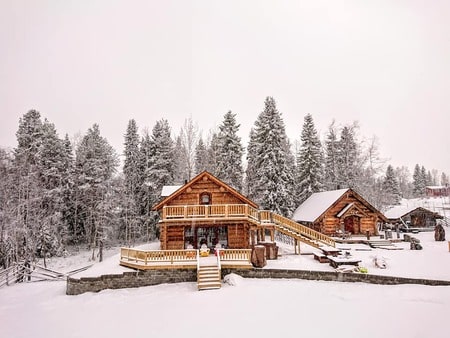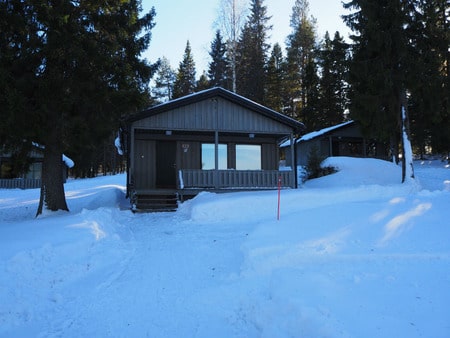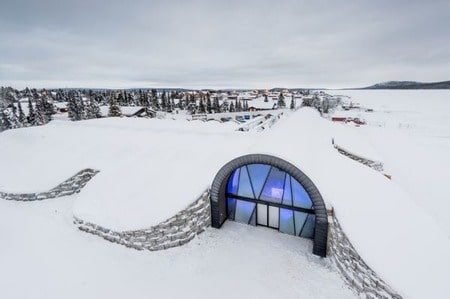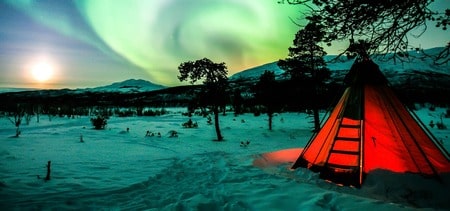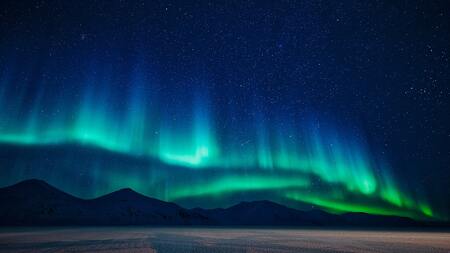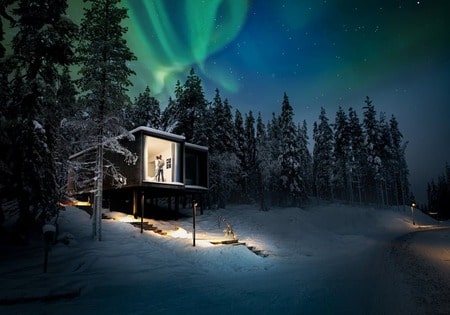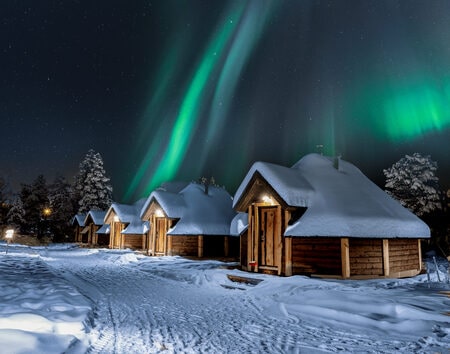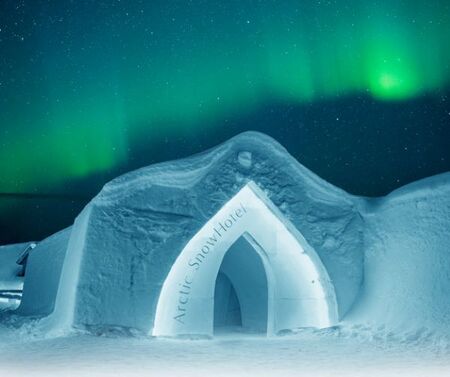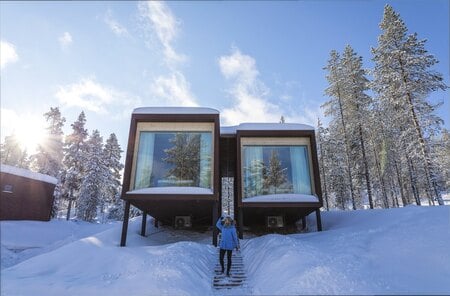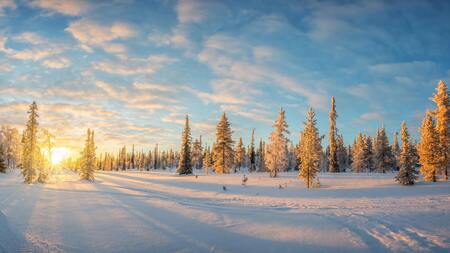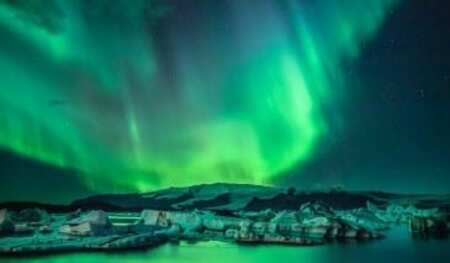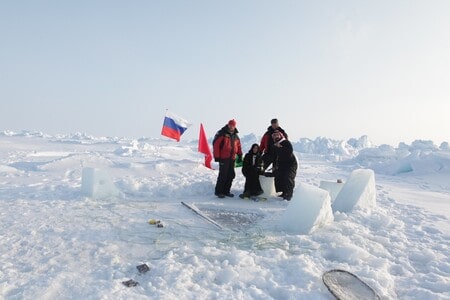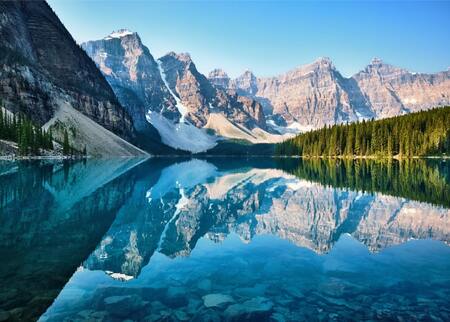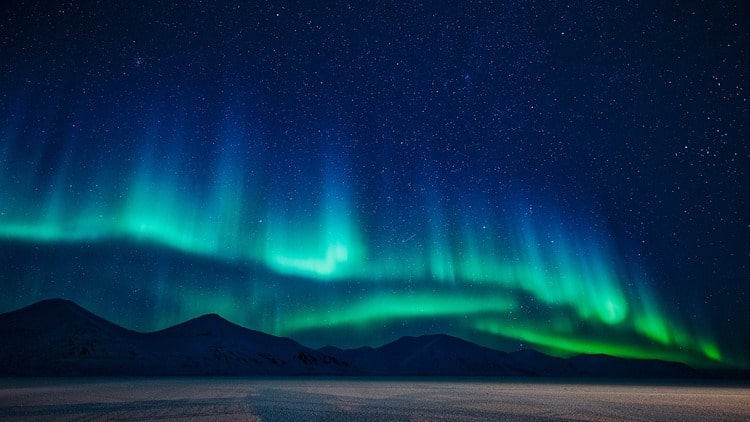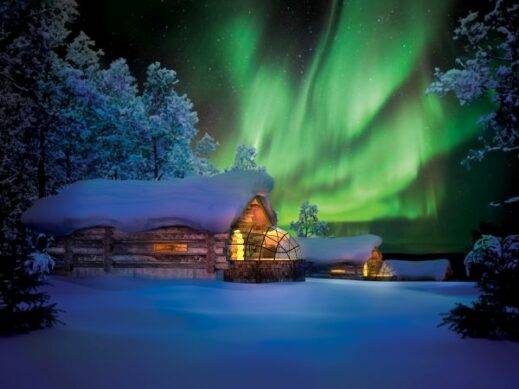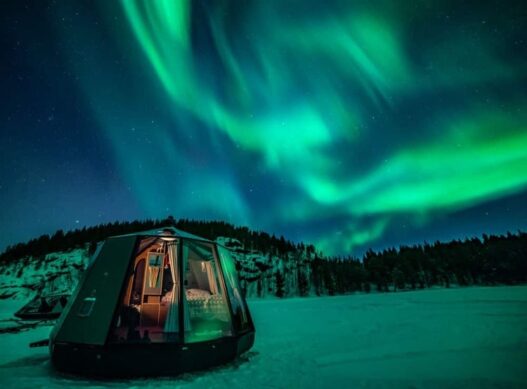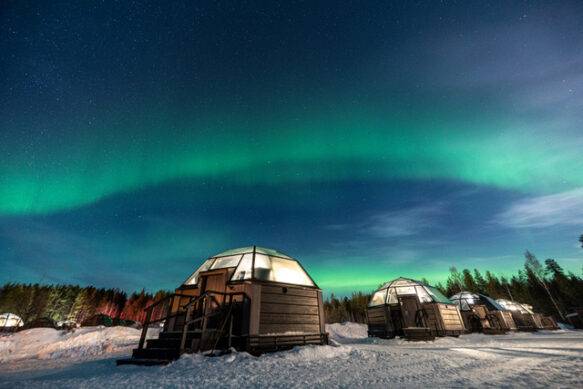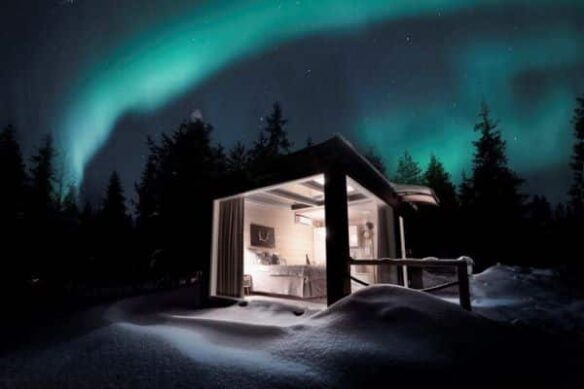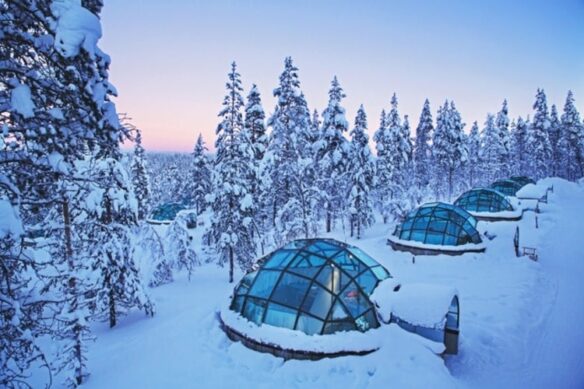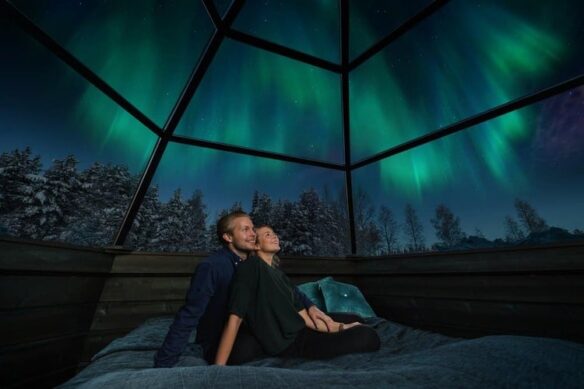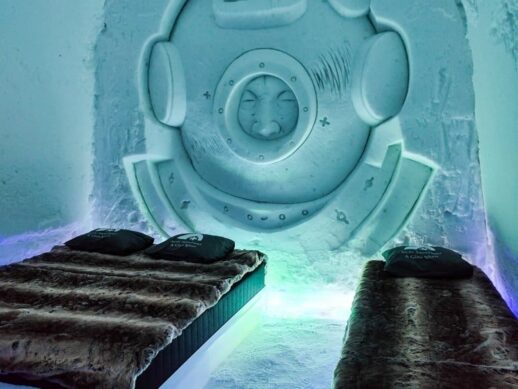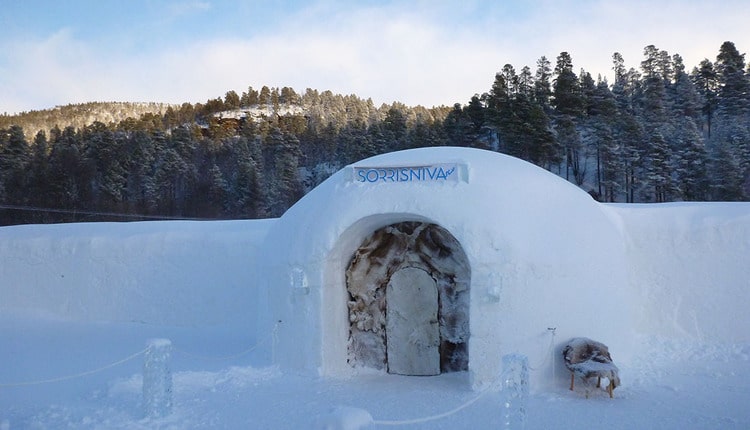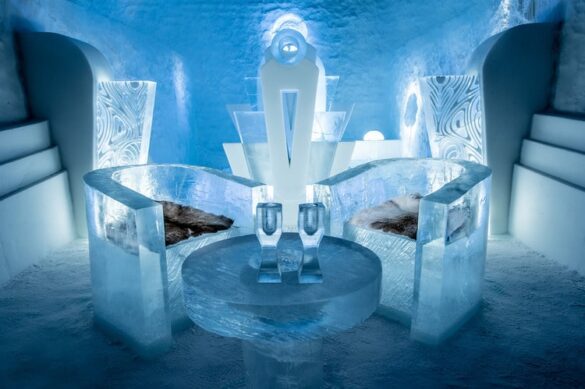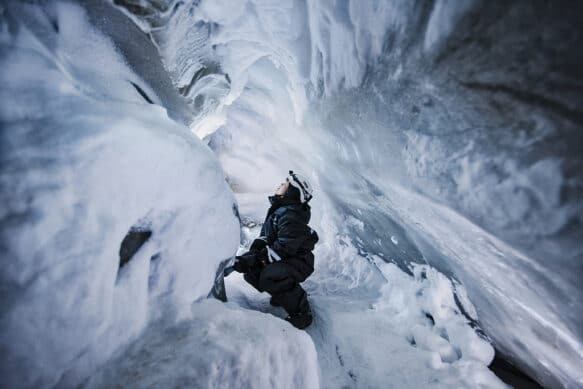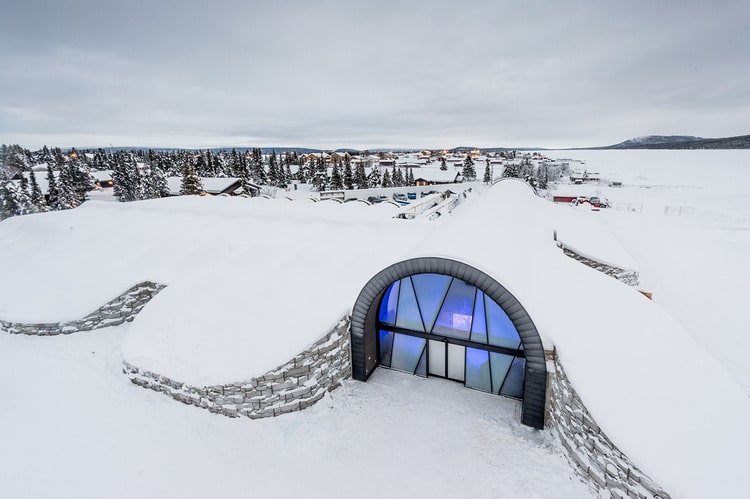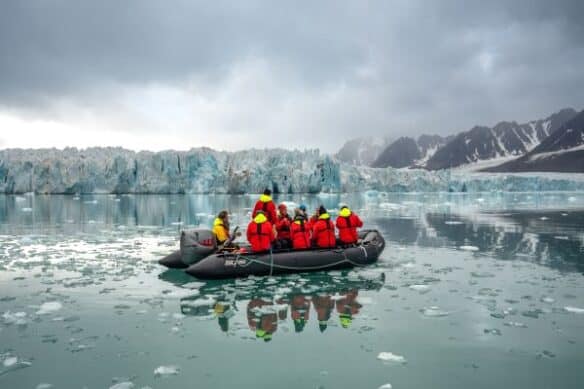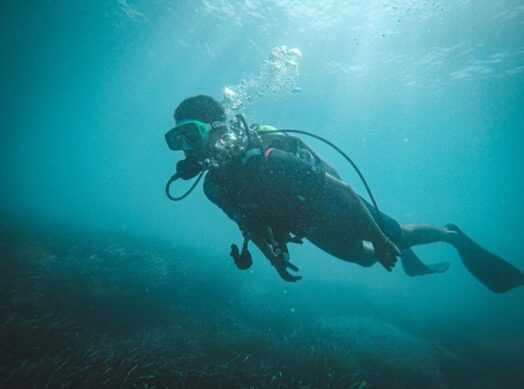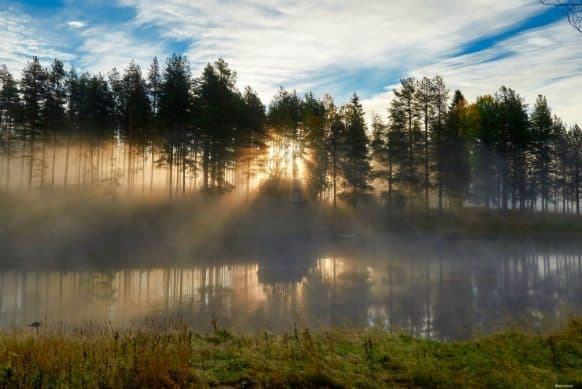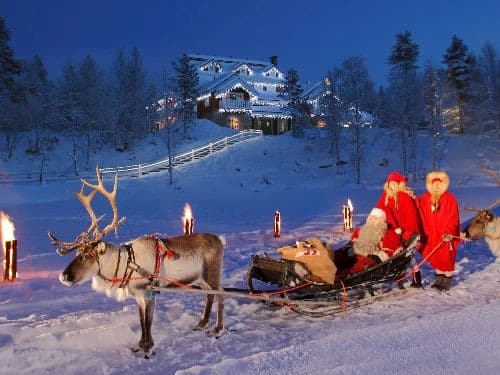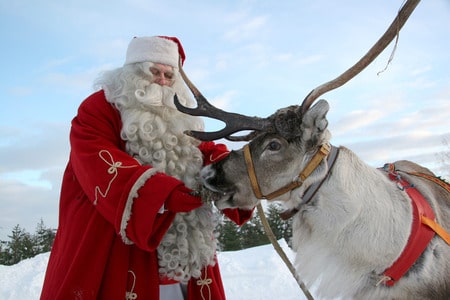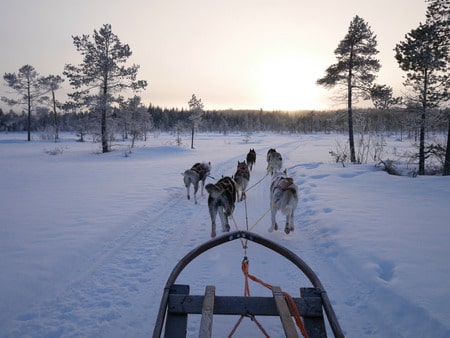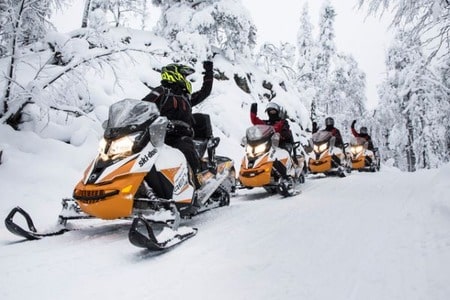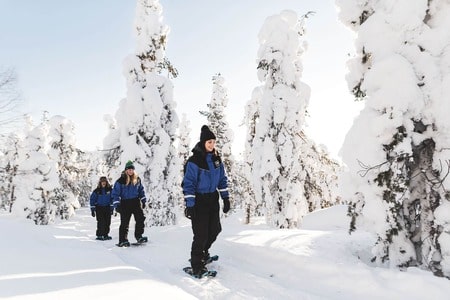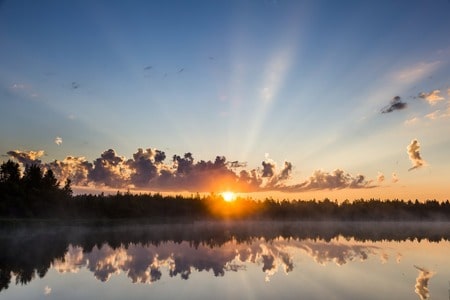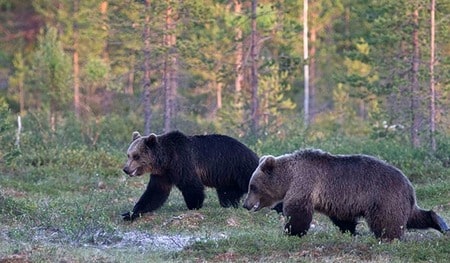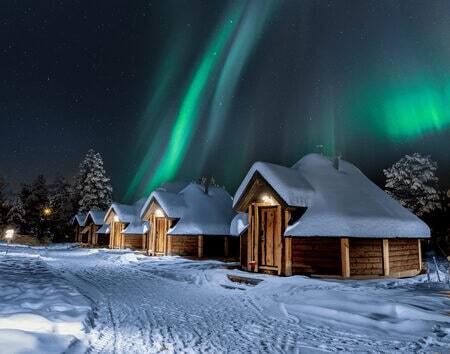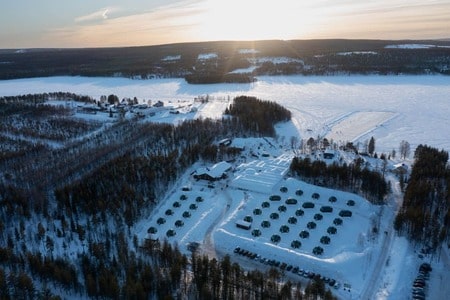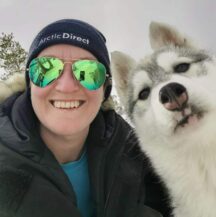The Northern Lights, or Aurora Borealis, is one of nature’s most spectacular displays, and a bucket-list experience for many. With its photograph-worthy scenery and high latitude, Iceland is one of the world’s top destinations for viewing this celestial phenomenon. As Northern Lights holiday specialists, we can help you witness this unforgettable spectacle up close.
This guide will help you plan the ultimate Northern Lights trip by exploring the best times, locations, and conditions for aurora hunting in Iceland.
What is Iceland’s Best Time of Year to See the Northern Lights?
The best time to see the northern lights in Iceland is between mid-September and early April, when the nights are longest and darkest. Peak viewing occurs around the autumn and spring, with clear skies enhancing visibility.
While the Northern Lights occur throughout the year due to charged solar particles colliding with Earth’s atmosphere, darkness is essential for human eyes to perceive the display. Iceland’s summer months, from May to early August, are unsuitable for northern light viewing due to near-continuous daylight caused by the Midnight Sun.
During the aurora season, from autumn to early spring, Iceland’s extended nighttime hours dramatically enhance the chances of catching a glimpse of the lights. The absence of sunlight allows the vibrant greens, purples, and reds of the aurora to stand out against the black sky.
Adding to this, geomagnetic activity peaks during the equinox periods. Around September 22 (autumn equinox) and March 21 (spring equinox), the Earth’s orientation relative to the sun creates conditions that intensify solar wind interactions with the planet’s magnetic field. These spikes in geomagnetic activity make these times particularly favourable for aurora hunting.
However, even during peak auroral periods, one crucial variable remains: weather. Clear skies are essential for viewing the lights. Cloud cover can obscure the phenomenon, no matter how active the aurora is. Iceland’s weather is notoriously changeable, so monitoring local forecasts, particularly in rural areas with minimal light pollution, is essential. Tools like the Icelandic Meteorological Office’s cloud cover maps and aurora forecasts are invaluable resources for travellers.
Month-by-Month Guide to Northern Lights Viewing in Iceland
September
September in Iceland offers excellent northern lights viewing due to longer nights after summer, increased geomagnetic activity near the autumnal equinox, and relatively mild weather. The combination of darkness, aurora intensity, and the changing autumnal scenery creates a perfect Northern Light experience.
- Aurora Activity: High potential, especially near the autumnal equinox.
- Weather: Relatively mild temperatures (5°C–10°C), though conditions can be unpredictable.
- Pros: Early in the month, autumn colours enhance Iceland’s beauty. Nights are longer, offering good chances for clear skies.
- Cons: Shorter nights compared to later months.
October
October offers consistent aurora activity, cooler weather, and longer nights. While cloud coverage may increase, fewer tourists make this month ideal for quieter northern lights experiences.
- Aurora Activity: Consistent with September.
- Weather: Cooler (0°C–7°C) with increased rainfall.
- Pros: Longer nights and fewer tourists than in summer.
- Cons: Cloud cover is more frequent.
November
In November, the extended darkness and consistent aurora activity create ideal conditions for viewing. The snow-dusted scenery adds to the enchantment, though the unpredictable weather can sometimes present difficulties in planning for your trip.
- Aurora Activity: Steady opportunities.
- Weather: Colder (-1°C–5°C) with increased wind and the possibility of snow.
- Pros: Extended darkness offers more viewing hours. Snowy backdrops add a mystical touch.
- Cons: Weather unpredictability can challenge planning.
December
December is perfect for northern lights seekers, with up to 20 hours of darkness. The holiday season adds to the attraction, but cold temperatures and potential snowstorms may disrupt your travel plans.
- Aurora Activity: Strong potential.
- Weather: Darkest month, with only 4–5 hours of daylight and temperatures between -3°C and 3°C.
- Pros: Long nights (up to 20 hours) increase aurora visibility. Festive holiday charm.
- Cons: Cold conditions and snowstorms may impact travel.
January
January offers reliable northern lights viewing with long, dark nights. Although it’s the coldest month of the year, the clear skies and snow-covered backgrounds create an unforgettable aurora experience.
- Aurora Activity: Reliable viewing conditions.
- Weather: Coldest month (-3°C–2°C), often snowy.
- Pros: Extensive night hours allow ample viewing opportunities.
- Cons: Harsh winter weather can make other sightseeing challenging.
February
February’s strong aurora activity, slightly warmer conditions, and increasing daylight provide a balance between aurora hunting and exploring Iceland’s attractions. Be prepared for unpredictable weather.
- Aurora Activity: Strong and consistent.
- Weather: Similar to January, but slightly warmer (-2°C–3°C).
- Pros: Increasing daylight improves travel flexibility, while cold, clear nights enhance aurora viewing.
- Cons: Weather remains unpredictable.
March
March is exceptional for northern lights, with geomagnetic activity peaking near the equinox. Mild temperatures and improved road conditions make this month ideal for combining sightseeing and aurora viewing.
- Aurora Activity: Peaks near the spring equinox due to heightened geomagnetic activity.
- Weather: Milder (0°C–5°C) with improved road conditions.
- Pros: Longer daylight hours for daytime activities combined with excellent aurora chances at night.
- Cons: Shortened nights compared to midwinter.
April
Aurora visibility tapers off in April, especially late in the month, but early opportunities still exist. Warmer weather and fewer tourists make it a quieter and budget-friendly time to visit.
- Aurora Activity: Visible in the first half of the month.
- Weather: Warmer (1°C–7°C) with rapidly increasing daylight.
- Pros: Fewer tourists and lower prices.
- Cons: Aurora’s chances diminish by late April as nights shorten.
While the Northern Lights are a highlight of any trip to Iceland, there’s so much more to explore depending on the season. Whether you’re visiting for the snowy landscapes of winter, the vibrant colours of autumn, or the Midnight Sun in summer, Iceland offers something unique throughout the year. To help plan your adventure, read our guide to holidays in Iceland all year round and discover the best activities for each season.
What’s the Best Time of Day to See the Northern Lights in Iceland?
The best time of day to see the northern lights in Iceland is between 9:00 PM and 2:00 AM, with peak visibility often around midnight.
This window coincides with the darkest hours of the night, providing the optimal conditions for observing the aurora borealis. Darkness is essential, as even faint light pollution can weaken the visibility of these delicate solar displays.
Why 9:00 PM to 2:00 AM?
The timing is influenced by both natural and astronomical factors. Between 9 PM and 2 AM is the best time of night to see the Northern Lights in Iceland as the sun is well below the horizon. The skies are at their darkest, especially in rural areas away from artificial light.
While sightings can sometimes happen earlier or later, these incidences are less common. The aurora is unpredictable, so maintaining patience and spending several hours outdoors enhances your chances. Many dedicated aurora hunters recommend staying alert, as the phenomenon can appear suddenly and last for only a few minutes or linger for hours.
Practical Tips for Aurora Viewing at Night
- Monitor Aurora and Weather Forecasts: Use real-time aurora forecasts, such as those provided by the Icelandic Meteorological Office, to gauge activity levels and ensure clear skies.
- Prepare for the Cold: The best viewing hours are often the coldest, so dressing in layers, wearing insulated boots, and bringing hand warmers are essential for staying comfortable during long nights outdoors.
- Minimise Light Pollution: Avoid city lights and seek out locations with little to no artificial light. Even a small amount of illumination can hinder your experience.
By planning your viewing during these critical hours and preparing accordingly, you can maximise your chances of witnessing Iceland’s spectacular northern lights. For a seamless experience, consider joining a guided tour with experts who know the best locations and times for aurora spotting.
Where is the Best Place to See the Northern Lights in Iceland?
When it comes to aurora hunting in Iceland, darkness is your greatest ally. Anywhere away from city lights provides a clear view of the night sky, making rural and remote areas the best spots for witnessing the northern lights. Joining a guided tour that tracks weather and aurora forecasts can further enhance your chances, as experts know where conditions are most favourable. However, Iceland also boasts several iconic locations that pair natural beauty with excellent aurora viewing opportunities.
Þingvellir National Park (Thingvellir)
Sited on the Mid-Atlantic Ridge, this location allows visitors to walk between two continents. Stunning aurora reflections can be seen on Lake Þingvallavatn (the largest natural lake in Iceland) and unique tectonic plate lands make it an ideal northern lights viewing spot.
- Why: A UNESCO World Heritage Site, Thingvellir offers vast open spaces and minimal light pollution.
- Bonus: The tectonic plates and Lake Þingvallavatn create breathtaking scenery for aurora reflections.
Jökulsárlón Glacier Lagoon
The lagoon’s glacial environment with floating icebergs creates an ethereal setting for aurora displays. Nearby Diamond Beach offers an extraordinary perspective with scattered ice fragments contrasting against black volcanic sand under the northern lights.
- Why: The serene, icy setting of floating icebergs illuminated by the aurora is unparalleled.
- Bonus: Nearby Diamond Beach offers a unique vantage point with black sand and shimmering ice fragments.
Skógafoss and Seljalandsfoss Waterfalls
These majestic waterfalls provide dramatic foregrounds for aurora photography. Seljalandsfoss is famous for its walk-behind experience, allowing you to view the Northern lights from within its mist.
- Why: These iconic waterfalls make stunning foregrounds for aurora photography.
- Bonus: Seljalandsfoss allows you to view the aurora from behind the cascading water for a truly unique perspective.
Reykjavik Outskirts
Just a short drive from the city, locations like Hella and Hveragerði offer dark skies away from the capital’s lights. These spots provide excellent conditions for aurora viewing, and are famous for their geothermal activity. Dress warmly as temperatures drop significantly at night.
- Why: For those based in the capital, the outskirts provide accessible options away from city lights. Locations like Hella or Hveragerði are excellent choices.
- Bonus: Convenient access to Reykjavik while reducing light pollution.
What Are the Best Conditions to See the Northern Lights?
The best conditions to see the northern lights include dark, clear skies far from light pollution, minimal cloud cover, and active geomagnetic activity. Cold nights with stable weather also enhance visibility, providing the perfect backdrop for aurora viewing.
First, prioritise dark skies by avoiding light-polluted areas; rural locations far from city lights, such as those deep in Iceland’s countryside, offer the best visibility. Clear weather is equally needed, as heavy cloud cover or precipitation can obscure the lights entirely. Check local forecasts to find nights with minimal cloud cover and plan your outings accordingly. Monitoring aurora forecasts is another key step – tools like the Aurora Forecast app provide updates on geomagnetic activity, helping you identify periods of heightened aurora activity.
Finally, remember that cold, clear nights are often associated with the best viewing opportunities. While chilly conditions may require bundling up, they frequently overlap with the atmospheric clarity needed to witness these dancing lights.
To summarise, aim for:
- Dark Skies: Avoid light-polluted areas. Rural locations are best.
- Clear Weather: Check local forecasts for cloud cover and precipitation.
- Aurora Forecasts: Monitor geomagnetic activity using tools like the Aurora Forecast app.
- Cold Temperatures: Cold, clear nights often coincide with higher aurora visibility.
FAQs
How Long Should I Stay in Iceland to See the Northern Lights?
Staying for at least 4–7 days increases your chances of seeing the aurora, as clear skies and active lights are not guaranteed every night. Flexibility allows for better planning around weather conditions.
Can the Northern Lights Be Seen from Reykjavik?
Yes, the northern lights can occasionally be seen from Reykjavik. However, light pollution often reduces visibility, making rural areas a better choice. Short excursions from the city enhance your chances.
Do the Northern Lights Happen Every Night in Iceland?
The northern lights are not visible every night, even during the peak season. Geomagnetic activity, weather, and cloud cover all affect visibility. Checking aurora and weather forecasts is essential for planning.
Conclusion: When is the Best Time to See the Northern Lights in Iceland?
The best time to see the northern lights in Iceland is between mid-September and early April when dark nights and increased geomagnetic activity align to create ideal viewing conditions. Clear skies and rural locations away from light pollution are key to maximising your chances, with the hours between 9:00 PM and 2:00 AM offering the best visibility. While weather can be unpredictable, proper planning and flexibility ensure an unforgettable Northern Lights adventure.
Maximise your chances of witnessing the northern lights by booking with Arctic Direct. Our Iceland experts craft luxury packages tailored to your preferences, ensuring an unmissable journey. Explore our Luxury Iceland Northern Lights packages and let us guide you to the aurora experience of a lifetime.
Contact us today to speak with an Arctic expert and start planning your dream trip.


